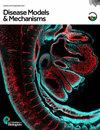改善罕见病基因治疗的可及性。
IF 4
3区 医学
Q2 CELL BIOLOGY
引用次数: 0
摘要
针对许多罕见疾病,包括先天性免疫和代谢错误、血红蛋白病和遗传性失明,已经开发出有效的基因治疗方法。尽管取得了成功的临床前和临床结果,但这些基因疗法并没有得到广泛应用,这主要是出于非医学原因。对超罕见疾病的疗法缺乏商业兴趣、开发成本以及先进治疗药物产品(ATMP)所需的复杂生产工艺,是限制这些疗法普及的一些主要问题。对于影响少数患者的治疗方法而言,在不同司法管辖区的监管环境中穿行的复杂性和成本是罕见和超罕见疾病 ATMPS 所特有的问题。在本《视角》中,我们概述了一些挑战和潜在的解决方案,希望它们能改善罕见病基因治疗的可及性。本文章由计算机程序翻译,如有差异,请以英文原文为准。
Improving access to gene therapy for rare diseases.
Effective gene therapy approaches have been developed for many rare diseases, including inborn errors of immunity and metabolism, haemoglobinopathies and inherited blindness. Despite successful pre-clinical and clinical results, these gene therapies are not widely available, primarily for non-medical reasons. Lack of commercial interest in therapies for ultra-rare diseases, costs of development and complex manufacturing processes required for advanced therapy medicinal products (ATMPs) are some of the main problems that are restricting access. The complexities and costs of navigating the regulatory environments in different jurisdictions for treatments that affect small numbers of patients is a problem unique to ATMPS for rare and ultra-rare diseases. In this Perspective, we outline some of the challenges and potential solutions that, we hope, will improve access to gene therapy for rare diseases.
求助全文
通过发布文献求助,成功后即可免费获取论文全文。
去求助
来源期刊

Disease Models & Mechanisms
医学-病理学
CiteScore
6.60
自引率
7.00%
发文量
203
审稿时长
6-12 weeks
期刊介绍:
Disease Models & Mechanisms (DMM) is an online Open Access journal focusing on the use of model systems to better understand, diagnose and treat human disease.
 求助内容:
求助内容: 应助结果提醒方式:
应助结果提醒方式:


